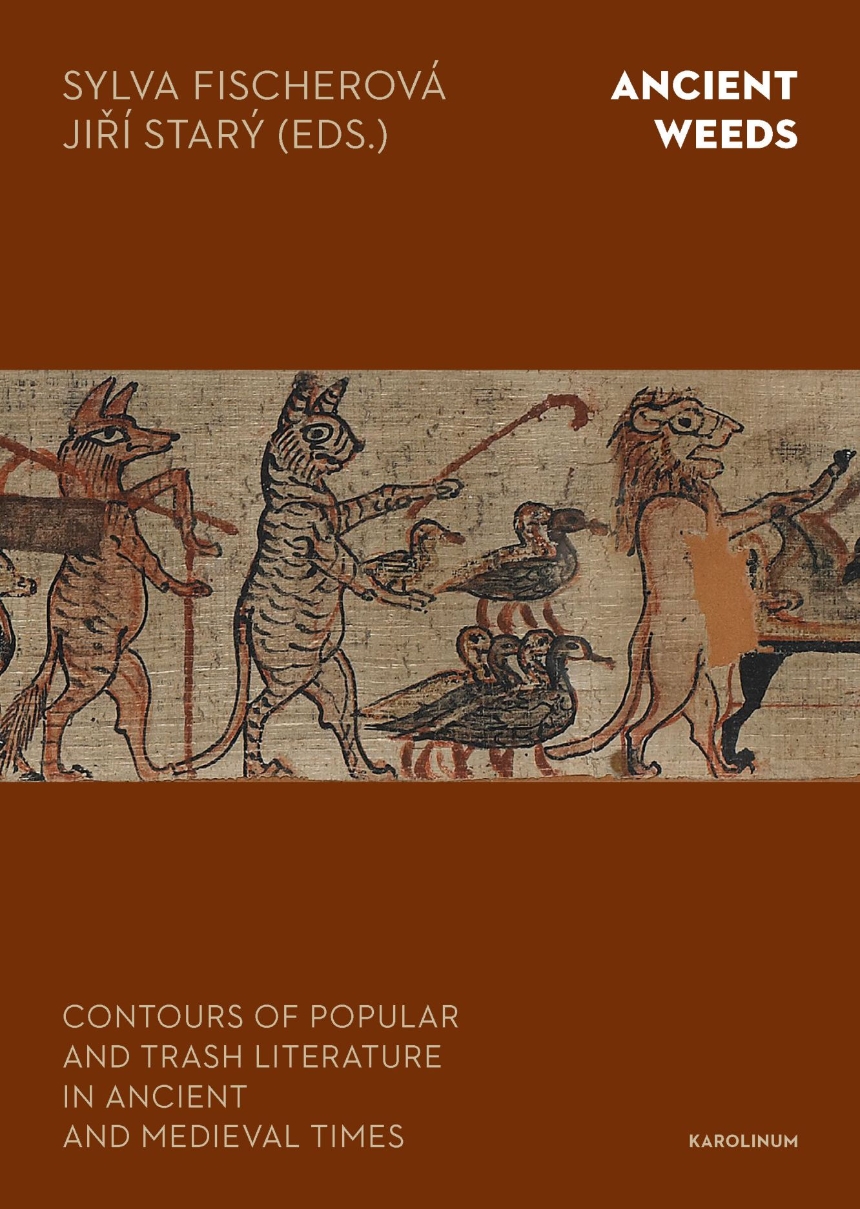Karolinum Press, Charles University
Ancient Weeds
Contours of Popular and Trash Literature in Ancient and Medieval Times
9788024654720
9788024654843
9788024654850
Distributed for Karolinum Press, Charles University
Ancient Weeds
Contours of Popular and Trash Literature in Ancient and Medieval Times
This book blurs the line between high and low culture throughout literary history.
The common story in literary studies is that the emergence of popular and junk literature is related to the emergence of modern society due to the rise of literacy and the shortening of workdays. Ancient Weeds upends this misconception by demonstrating that antiquity had its fair share of literary pieces that fit the definition of popular, trivial, and junk literature. The authors analyze artifacts such as the ancient Egyptian Turin Papyrus, ancient love novels, Christian hagiographies and passion plays, lives of Jesus and Marian hymns, Old Norse tales and lying sagas, and Spanish blind romances. Through numerous excerpts, it becomes clear that the line between junk and high literature is thinner than it seems. They reveal how seemingly low themes such as sex and violence often overlap with the themes of high literature. In many cases, low literature is more imaginative and subversive than canonical texts, and bizarreness and non-conformity do not necessarily equate to the ephemerality of a work. As Ancient Weeds shows, thousands of years after it was written, low literature can still be a great source of entertainment today.
The common story in literary studies is that the emergence of popular and junk literature is related to the emergence of modern society due to the rise of literacy and the shortening of workdays. Ancient Weeds upends this misconception by demonstrating that antiquity had its fair share of literary pieces that fit the definition of popular, trivial, and junk literature. The authors analyze artifacts such as the ancient Egyptian Turin Papyrus, ancient love novels, Christian hagiographies and passion plays, lives of Jesus and Marian hymns, Old Norse tales and lying sagas, and Spanish blind romances. Through numerous excerpts, it becomes clear that the line between junk and high literature is thinner than it seems. They reveal how seemingly low themes such as sex and violence often overlap with the themes of high literature. In many cases, low literature is more imaginative and subversive than canonical texts, and bizarreness and non-conformity do not necessarily equate to the ephemerality of a work. As Ancient Weeds shows, thousands of years after it was written, low literature can still be a great source of entertainment today.
544 pages | 6 1/2 x 9 1/4 | © 2023
Literature and Literary Criticism: Classical Languages, General Criticism and Critical Theory
Reviews
Table of Contents
Ancient and Modern Weeds: an Attempt at a Definition
Popular Literature and Pulp Fiction in Ancient Egypt
The Ancient Love Novel: Formula and Its Innovation
Early Christian Martyrologic Texts: Between Topoi and Entertaining Reading
The Paradox of High Popular Art and Formulaic Creativity in the Sagas of Icelanders
Coal-Biters and Their Journey Out: Popular Features of Old Norse Short Narratives
The Author, Schema and Originality: the Case of Old Norse Lying Sagas
Formula Theatralis: Formulaic Elements and Structures in Central
European Medieval Religious Drama
The Highest Lady and the Cycle of Praise: Alfonso X’s Attempt to Create Literature “for the People”
A “Not Very Specific Term”: Late Medieval Popular Literature
Romances of the Blind as Pulp Fiction
Popular Literature and Pulp Fiction in Ancient Egypt
The Ancient Love Novel: Formula and Its Innovation
Early Christian Martyrologic Texts: Between Topoi and Entertaining Reading
The Paradox of High Popular Art and Formulaic Creativity in the Sagas of Icelanders
Coal-Biters and Their Journey Out: Popular Features of Old Norse Short Narratives
The Author, Schema and Originality: the Case of Old Norse Lying Sagas
Formula Theatralis: Formulaic Elements and Structures in Central
European Medieval Religious Drama
The Highest Lady and the Cycle of Praise: Alfonso X’s Attempt to Create Literature “for the People”
A “Not Very Specific Term”: Late Medieval Popular Literature
Romances of the Blind as Pulp Fiction

